2014 Mazda3 Vs 2014 Ford Focus

What if you’re still driving a ’98 Ford Escort or anything else likely to show up on NPR’s list of recently-donated vehicles? Well, maybe it’s time to trade up, and we’ve got two cars you might want to consider.
As you may already know, the new Mazda3 won the 2014 AutoGuide.com Car of the Year award, but that doesn’t mean it’ll automatically take the win in any comparison. Keep in mind that the Ford Focus wasn’t new for 2014 and consequently wasn’t even eligible as a nominee.
Get the Flash Player to see this player.
The current generation Focus arrived for the 2011 model year and will go through a considerable refresh for 2015. But until then, we’ve got the best version of the Focus to test: the top-level Titanium trim.
Powered by a 2.0-liter naturally aspirated four banger, with 160 hp and 146 lb-ft, it’s more powerful than the base Mazda3’s 2.0-liter engine with 155 hp and 150 lb-ft of torque. For this comparison, we’ve sourced a 2.5-liter version that offers 184 hp and 185 lb-ft of torque.
Both the Ford and Mazda products are available with either a manual transmission or a six-speed automatic, although Mazda will only sell you a stick with its 2.0-liter model. The Focus makes due with a relatively unrefined six-speed dual-clutch transmission or a five-speed manual. Ptooey!
Would You Pick Fun to Drive or Flat Out Fantastic?
The Focus is no slouch as affordable compact hatchbacks go. It offers more than enough power to accelerate comfortably at highway speeds, but with a nearly identical curb weight to the Mazda3, it just isn’t anywhere near as sporty to drive.
Roughly 50 lbs heavier than the Ford, the Mazda3 still comes away feeling far more engaging on the road. That becomes even more the case if you press the “sport” button near the shift lever, prompting different shift patterns and sharper throttle response. Things are even more fun when you start playing with the paddle shifters.
Truth be told, the 2.5-liter powertrain is potent enough even without sport mode in effect. Still, the car isn’t perfect.
A relatively convex seat shape makes the Mazda3 a little bit less comfortable to sit in, but it’s a small price to pay compared to all the car offers in superior driving dynamics. Turn-in with the Mazda3 feels more certain and planted through corners. While the Focus isn’t bad, it’s just not as good.
Cabins: They Have Them
Mazda misses certain cabin ergonomics nuances that drag the car down compared to what it could be. For example, the available head-up display appears on a flip-up screen that sits in the dashboard. Most manufacturers project the HUD directly onto the vehicle windshield, but in Mazda’s case you still need to look away from the road to see what the display has to say.
Again, that’s a small gripe in what is an overwhelmingly well-executed package. A metal-coated wheel mounted near the cup holders copies the rotating bezel controls you can also find controlling infotainment systems in products from premium German brands including BMW and Mercedes-Benz. It’s a no-brainer to use that leaves the MyFord Touch system feeling slow, unresponsive and desperately outdated. The center stack you get with the Focus is stylish enough, but it feels unnecessarily busy beside Mazda’s minimalist approach.
Despite having spent over three years on the market, the Focus still boasts attractive cabin aesthetics. Ford upholsters “Titanium” models with leather while the Mazda3 comes with imitation leatherette as standard on all 2.5-liter models as well as the Grand Touring 2.0-liter version. Leather is available on the top tier Grand Touring model.
Ford has an advantage in overall cargo carrying capacity, but it’s a small one. You get 23.8 cubic feet with the rear seats raised in a Focus hatchback while the Mazda3 gets 20.2. Lower the second row and that all changes because the Mazda3 can hold up to 47.1 cubic feet compared to 44.8 in the Ford. Realistically, the difference in those measurements is small enough that it won’t end up mattering often, if at all.
Real World Fuel Economy
On the other hand, gas mileage just might. According to the U.S. government’s official figures, the two cars should return an average 31 MPG, but that didn’t turn out to be the case. Ford fell short during a side-by-side driving loop split evenly between city and highway speeds to return 28 MPG while the Mazda3 achieved 30. That’s even more impressive when you consider Mazda manages with a traditional automatic transmission and a bigger engine that offers considerably greater output.
Lookers, The Both of Them
I, for one, am not looking forward to the new styling headed for next year’s Focus. Even with its age, the current car looks good and it’s a shame that Ford’s corporate facelift has to be so far-reaching. The current car looks good.
So does the Mazda3, which arguably boasts some of the most attractive styling in the compact car segment today. With available 18-inch alloy wheels, the car doesn’t have a hard time standing out. The “Soul Metallic” red paint costs an extra $300 while you can also opt for “Snowflake White” for $200 but none of the other six colors come with a price increase.
Compare Specs
| Vehicle | 2014 Ford Focus | Advantage | 2014 Mazda3 |
|---|---|---|---|
| Engine HP TQ | 2.0 160 hp, 146 lb-ft | Mazda3 | 2.5 L 184 hp, 185 lb-ft |
| Transmission | Six Speed DCT | - | Six Speed Auto |
| Fuel Economy | 27 mpg city/37 mpg highway/31 mpg combined | - | 27 mpg city / 37 mpg highway/ 31 mpg combined |
| Cargo space | 23.8 (44.8 behind front seats) | Focus (Mazda) | 20.2 (47.1) |
| Front Head Room | 38.3 | Focus | 37.6 (w/moon roof) |
| Rear Head Room | 37.9 | Focus | 37.5 (w/moon roof) |
| Front Leg Room | 41.9 | Mazda3 | 42.2 |
| Rear Leg Room | 33.2 | Mazda3 | 35.8 |
| Curb Weight | 2,948 lbs | Focus | 3,002 lbs |
| Turning Circle | 36 feet | Focus | 37 feet |
| Starting Price | $19,450 | Focus | $19,740 |
| As Tested Price | $26,085 | Mazda3 | $25,810 |
Red and blue paint both cost $395 for the Focus and a coat of white metallic rings in at $595. That leaves you with four no-cost paint options and plenty of style without spending any extra.
Pricing for either car is pretty much neck-and-neck. Ford charges $19,450 for the SE hatchback model while the Mazda costs $290 more than that. As equipped, the Mazda3 in the test costs $25,810 compared $26,090 for the Focus.
If you choose the Focus, you’ll have access to automatic parking assistance for $395. That’s probably well worth the price if you don’t feel comfortable parallel parking and plan to stop street side with any regularity. Both cars do an admirable job of taking the stress out of performing those sorts of parking jobs with available rear-view cameras that almost make reversing into small spaces a non-issue.
Speaking of outward visibility, Mazda once again has Ford beat. The Focus features a steep, tall dashboard. It isn’t prohibitive, but the better view out of the Mazda just makes it a more confidence-inspiring ride. Similarly, Mazda does a better job of dialing in more connected feeling with the road while you’re steering. Then again, that has its drawbacks, too.
Ride Harshness
One of the biggest trade-offs in daily driving between two cars is that Mazda’s SkyActiv chassis is especially stiff and that is noticeable over rough pavement. It allows for better handling characteristics, but you’ll lose a degree of ride comfort compared to the Focus.
Ford’s steering feels less precise, but you’ll notice that the Focus feels tamer over cracked road surfaces, if only a little.
The Verdict:
Both of these cars are standouts in the compact segment. They both offer attractive styling, practicality, and relatively reasonable pricing. Ford’s roots are starting to show and even if you agree that the incoming styling isn’t really an enhancement, it’s high time for an update. With more power, better real-world fuel economy and venerable handling, the Mazda3 continues to defend its crown.

Luke is an energetic automotive journalist who spends his time covering industry news and crawling the internet for the latest breaking story. When he isn't in the office, Luke can be found obsessively browsing used car listings, drinking scotch at his favorite bar and dreaming of what to drive next, though the list grows a lot faster than his bank account. He's always on <A title="@lukevandezande on Twitter" href="http://twitter.com/lukevandezande">Twitter</A> looking for a good car conversation. Find Luke on <A title="@lukevandezande on Twitter" href="http://twitter.com/lukevandezande">Twitter</A> and <A title="Luke on Google+" href="http://plus.google.com/112531385961538774338?rel=author">Google+</A>.
More by Luke Vandezande

















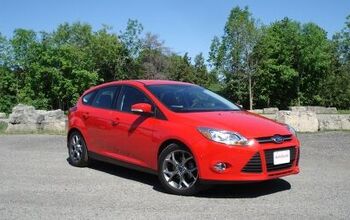
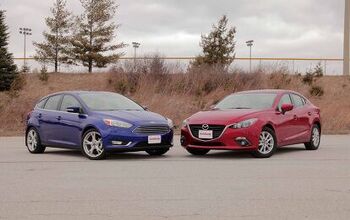
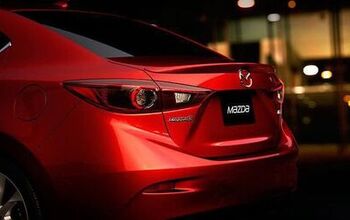


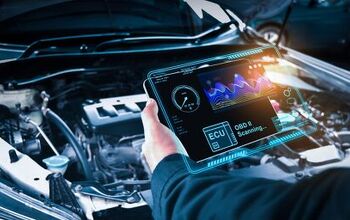


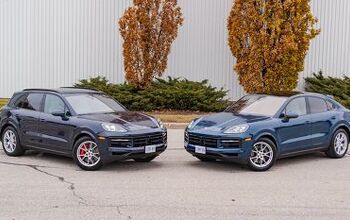


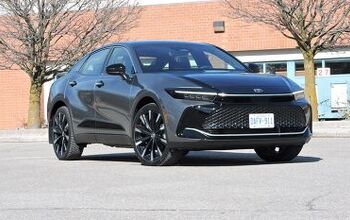
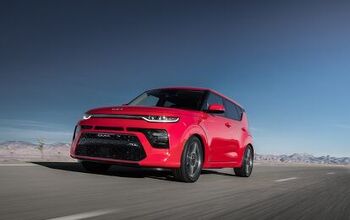
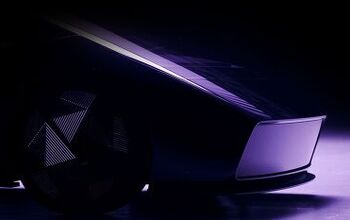
Comments
Join the conversation
I rented a Mazda 3 GT in Germany for 2 weeks in June 2014, and loved it EXCEPT for: a) the heads up display, which I think is a PITA and a problem waiting to happen. Damage that little flip-up plastic, and you speedometer is only a 1/2 inch digital read-out hiding on the dash display, and b) the R position of the 6-speed transmission is far left and up, banging my right leg each time I selected it (I'm used to Honda's far-right and down R position, admittedly). The car got excellent gas mileage on the autobahn at 100 mph speeds, typically about 38 mpg. But AVIS insisted, even writing it on the rental contract, that I use ONLY SUPER fuel which was costing about 1.56 Euro per litre at the time...very expensive, given the euro/dollar conversion rate of 1.44 (including bank surcharge). At the end of the 2 weeks, and even now, I would seriously consider buying one..with an automatic trans (I'm tired of rowing the shifter around town).